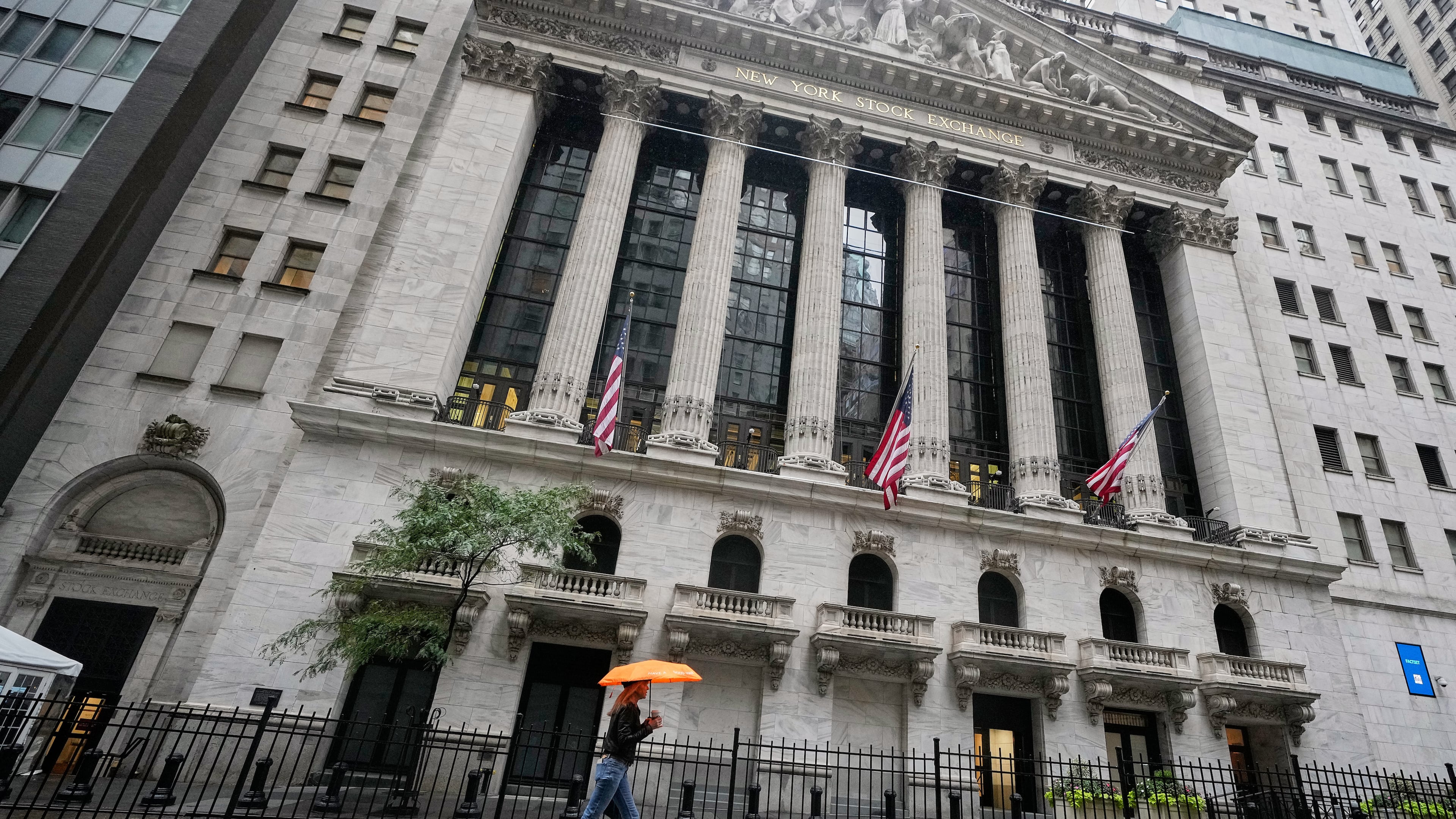Wall Street steadies after its slide as banks recover some of their losses

NEW YORK (AP) — The U.S. stock market seems to be steadying on Friday, as banks recover some of their sharp losses from the day before.
The S&P 500 slipped 0.2% in midday trading. The Dow Jones Industrial Average was up 23 points, or 0.1%, as of 11:30 a.m. Eastern time, and the Nasdaq composite was 0.5% lower. All three indexes drifted between gains and losses through the morning, but the moves weren't as jarring as the big hour-to-hour swings they had earlier in the week.
Drops for Big Tech stocks weighed on the market, including a 0.5% dip for Nvidia. They’re fighting criticism that their stock prices have soared too high because of the frenzy around artificial-intelligence technology, even though their profits have also been growing quickly.
Bank stocks stabilized after several reported stronger profit for the latest quarter than analysts expected, including Truist Financial, Fifth Third Bancorp and Huntington Bancshares. That helped steady the group, a day after tumbling on worries about potentially bad loans hitting smaller and midsized banks.
The two banks at the center of Thursday’s action also rose Friday to trim some of their sharp losses.
Zions Bancorp., which is charging off $50 million of loans where it found “apparent misrepresentations and contractual defaults” by the borrowers, added 2.8% following its 13.1% loss.
Western Alliance Bancorp, which is suing a borrower due to allegations of fraud, rose 1.3% after its 10.8% fall on Thursday.
Scrutiny is rising on the quality of loans that banks and other lenders have broadly made following last month’s Chapter 11 bankruptcy protection filing of First Brands Group, a supplier of aftermarket auto parts.
One of the financial firms that could feel pain because of First Brands' bankruptcy, Jefferies Financial Group, rose 5.1% Friday. It had lost roughly 30% of its value since mid-September.
The question is whether the lenders’ problems are just a collection of one-offs or a signal of something larger threatening the industry. Uncertainty is high following a long stretch where many borrowers were able to keep running, even with the weight of higher interest rates. And with prices soaring to records for all kinds of investments, the appetite for risk may have gotten too high.
JPMorgan CEO Jamie Dimon addressed the issue on an earnings conference call with analysts earlier this week.
“When you see one cockroach, there are probably more,” Dimon said. “Everyone should be forewarned on this one.”
“But banks make loan loss provisions and typically have plenty of capital to keep the cockroaches from causing structural damage,” said Brian Jacobsen, chief economist at Annex Wealth Management. “Based on earnings and data so far, it looks like this isn’t an infestation” and that the potential canary in the coal mine “is probably passed out and not dead.”
Trading has been shaky on Wall Street, with stocks regularly swinging between gains and losses, since President Donald Trump threatened to crank tariffs much higher on China at the end of last week.
But Trump told Fox News Channel's “Sunday Morning Futures” that such high tariffs are not sustainable, helping to ease some of the worries. He also said that he would meet with China’s leader, Xi Jinping, at an upcoming conference in South Korea after earlier saying there seemed to be “no reason” for such a meeting.
In the bond market, Treasury yields steadied following their sharp slides from Thursday, which came as investors rushed into investments seen as safer.
The yield on the 10-year Treasury edged up to 4.00% from 3.99% late Thursday.
Gold also pulled back from its latest record as more calm seeped through the market.
The price for an ounce slipped 1.3% to fall back to $4,247.40, but it's still up more than 60% for the year so far. Besides worries about tariffs, gold's price has also surged on expectations for coming cuts to interest rates by the Federal Reserve and concerns about the massive amounts of debt that the U.S. and other governments worldwide are building.
In stock markets abroad, indexes tumbled across much of Europe and Asia after Wall Street's weakness from Thursday moved westward.
Germany’s DAX lost 1.7%, and Hong Kong’s Hang Seng sank 2.5% for two of the world’s bigger moves.
___
AP Writers Teresa Cerojano and Matt Ott contributed.
